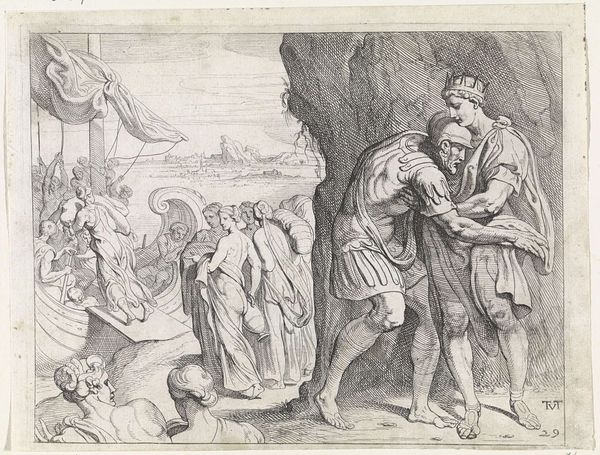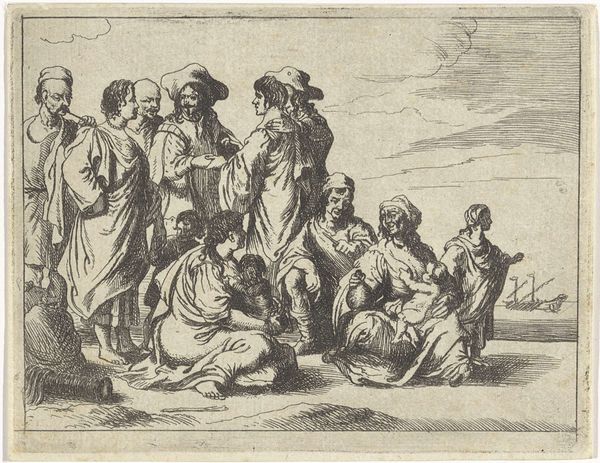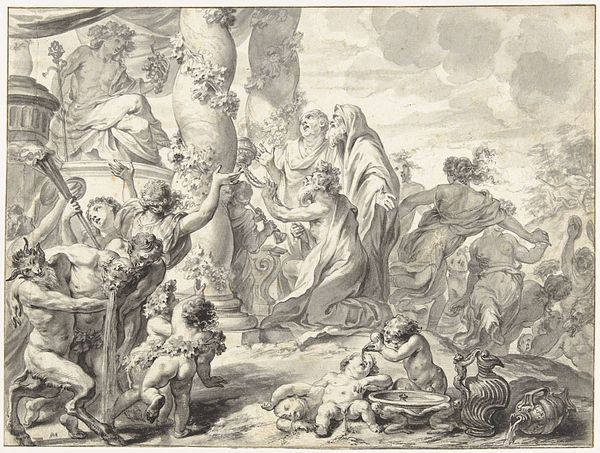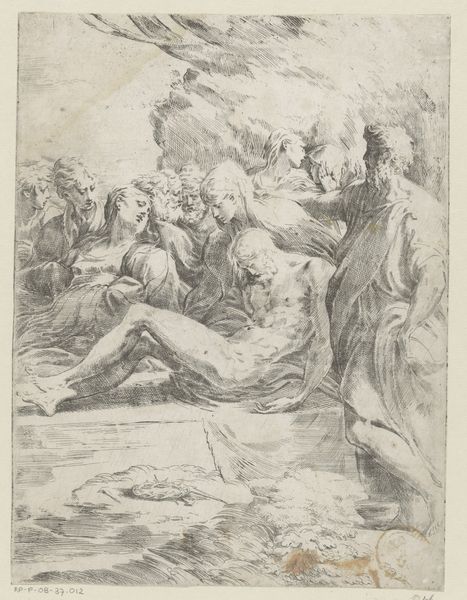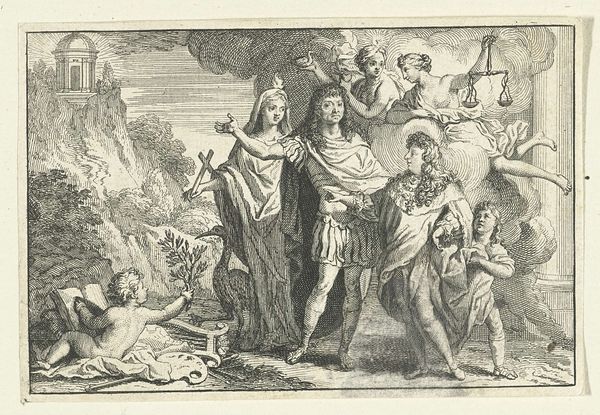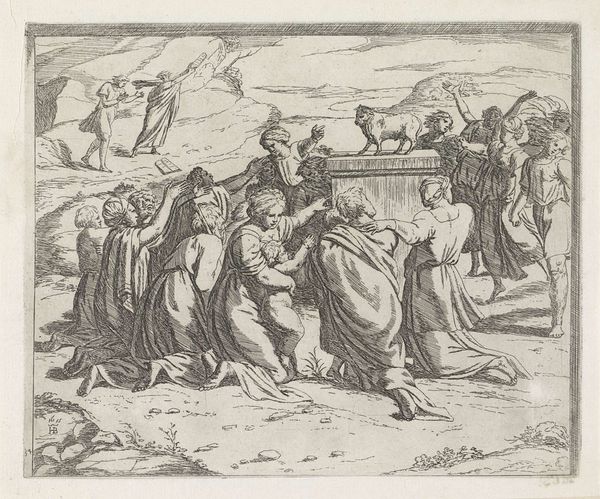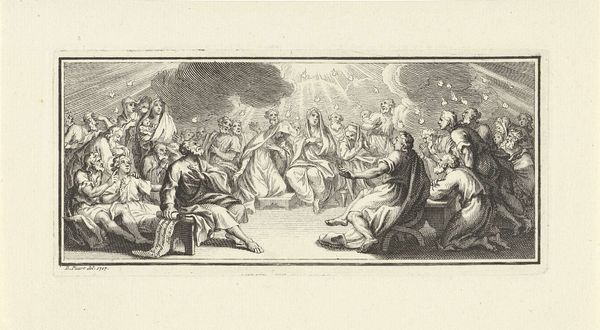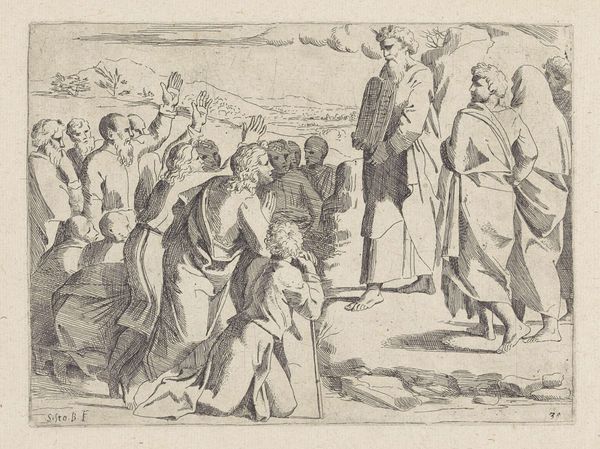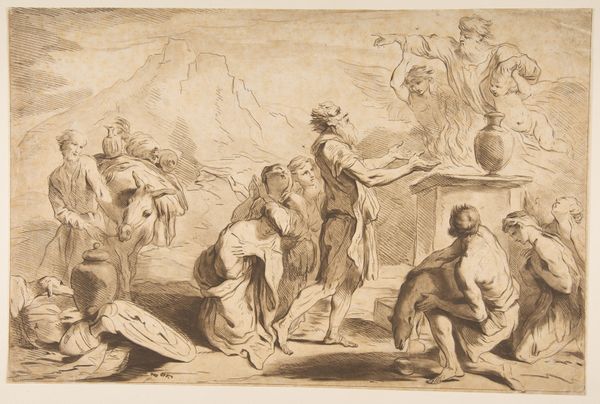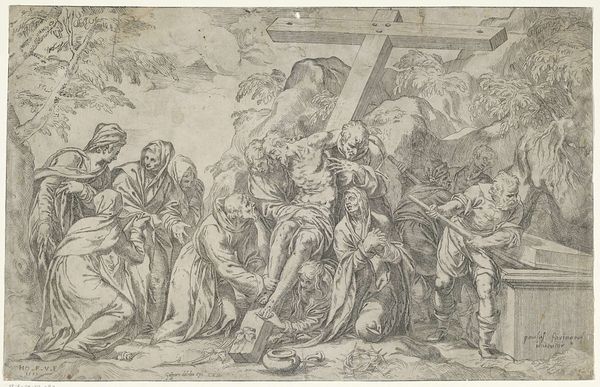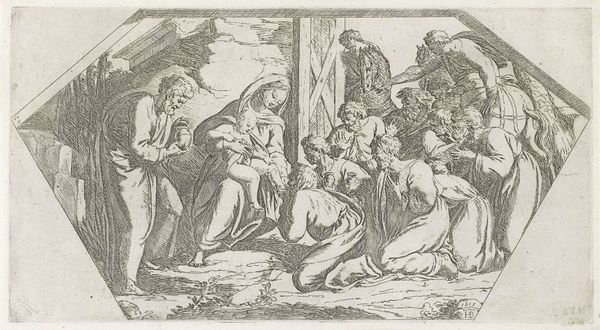
drawing, etching, ink
#
drawing
#
narrative-art
#
baroque
#
etching
#
landscape
#
figuration
#
ink
#
history-painting
Dimensions: height 266 mm, width 415 mm
Copyright: Rijks Museum: Open Domain
Franz Ertinger created this print, "Preaching of John the Baptist," through etching, a printmaking process that democratized image production. The original drawing would have been made with a sharp needle on a wax-coated metal plate. The plate is then immersed in acid, which bites into the exposed lines, creating grooves. Ink is applied to the plate, filling the etched lines, and the surface is wiped clean. Finally, paper is pressed onto the plate, transferring the ink and creating the print. Etching allowed for relatively quick and inexpensive reproduction, making images accessible to a wider audience. This print, depicting a biblical scene, reflects the increasing availability of religious imagery. Consider the labor involved in this process: the artist's hand drawing the design, the etcher's skill in preparing the plate, and the printer's craft in transferring the image. By understanding the material and the making, we can fully appreciate the cultural and social significance of this seemingly simple print.
Comments
No comments
Be the first to comment and join the conversation on the ultimate creative platform.


